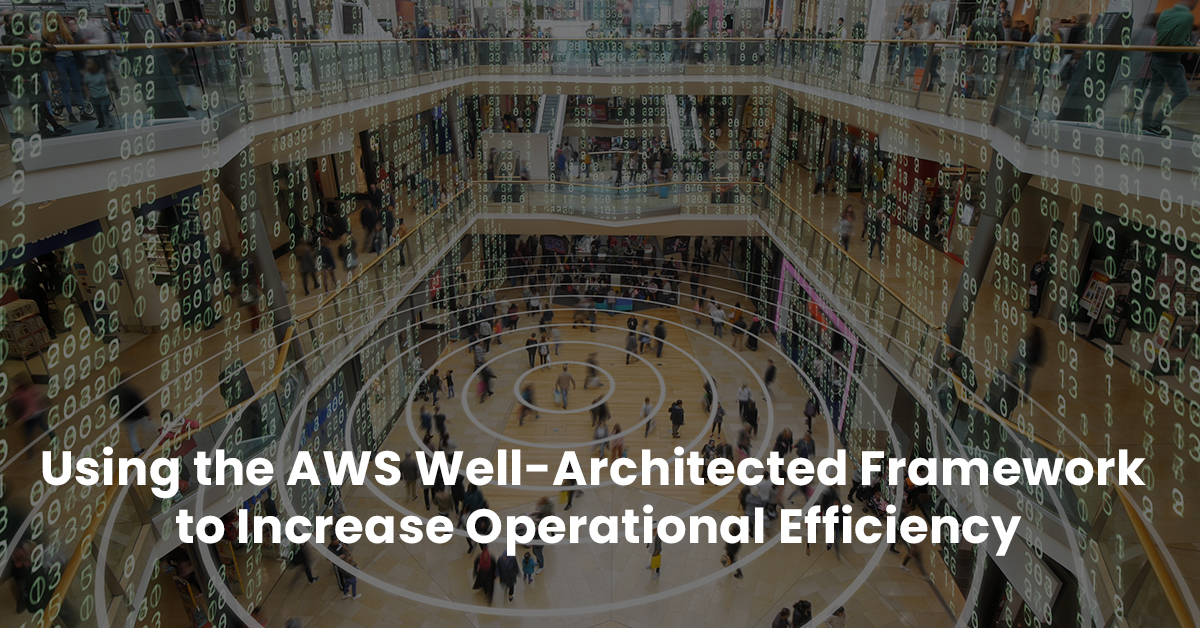The Well-Architected Framework has five main pillars. The first pillar is Operational Excellence. By implementing the recommended design best practices of this pillar, you can increase the output of cloud applications.
Initially, cloud users encountered recurring problems. With little advancements, it was difficult to understand the root cause of problems. For example:
- Crashing applications
- Reversing wrong lines of code
- It was difficult examining why apps fail.
- It was difficult to offer recommendations for improvement from failed processes.
The Operational Excellence Framework helps mitigate all operational issues.
What is Operational Excellence?
Operational excellence involves making small improvements to cloud applications until you achieve a sustainable infrastructure. Users have to note insights and implement best practices from the design to deployment phase for every operation.
To increase operational efficiency, you can implement the following design principles:
- Make everything “As a Code”: Whether you’re dealing with infrastructure or operations, it helps to have a uniform cloud environment. AWS helps cloud users to implement operations as a code, infrastructure as a code, and make their applications as a code. The code approach makes it easy to automate tasks. More automation reduces human error, hence increasing efficiency.
- Work in Small Milestones: Instead of putting thousands of lines of code in one script, split large workloads into smaller ones. If there’s an interruption, it’s easy to mitigate losses. In addition, you can encrypt and secure each segment, a process known as micro-segmentation. This design principle ensures other parts of the application continue working even if one segment fails.
- Do Frequent Pen-Testing: The Operation Excellence pillar teaches that you can’t be confident about your application without testing. While testing for effectiveness is important, operational excellence requires you to test security as well. Developers have to assume that no application is perfect. For this reason, developers have to fix the root causes of failure through frequent testing.
- Update Your Applications Regularly: Update all user-friendly applications frequently. You can update the user interface and let users vote for the best one. An operationally effective application will incorporate its users’ needs in its design.
How to Increase Operational Efficiency
Here are three steps to increasing AWS Operational Efficiency:
1. Prepare Your Environment
Familiarize your team members with the cloud environment. Train them on the five pillars of the AWS Well-Architected Framework. Train your management, finance, and IT business units as well. You can also assess the health status of your cloud environment. A health report reveals both high- and low-scoring areas. In addition, a detailed health report can highlight areas of improvement.
2. Organize Your Team
Use a simple workload organization strategy. Create workstreams for each section of the cloud. Each workstream will have a leader who conducts meetings to discuss how he or she will meet the objectives. Also, link each objective to a cloud metric to help measure performance. Have a leader for each infrastructure, each account, and each application. An internal communications guy can also help sync communications within business units.
3. Use Cloud Tools
There are many tools to simplify your operational efficiency process. For example, Amazon CloudWatch has a dashboard where you can gain visibility into development processes and workloads. Users can set up trigger alarms to help respond to failed operations faster. In addition, AWS users can schedule events, set up custom logins, and manage advanced workloads with the tool.
You can leverage the Systems Manager tool to automate commands. Instead of doing operations manually, the AWS Systems Manager helps remove human error in cloud operations, making them more efficient. In addition, AWS helps you automate repeatable deployments. You can also copy repeated rules across hybrid environments.
Increasing Operational Efficiency with nOps Cloud Management Platform
The nOps Cloud Management Tool evaluates your cloud against the five pillars of the AWS Well-Architected Review. You can gain an instant score on Performance Efficiency and Operational Excellence. The metric is in real time, so as you optimize the cloud, the score increases.
The nOps Cloud Management platform offers all the following features:
- A log of past changes within your cloud. This is essential while moving your dev team. For example, a new freelance team can learn faster by gaining instant visibility into cloud changes.
- nOps helps you maximize the use of Spot Instances and other resources. As a result, each instance will meet your cloud needs and make your infrastructure more efficient.
- You can make performance-driven decisions using nOps alerts. nOps lets you identify underutilized resources. You can track resource spending by users, integrate applications, such as Jira, and much more.
- nOps uses machine-learning technology to make you meet the Operational Excellence pillar. You get both short-term and long-term tips on how to meet the AWS framework. As a result, AWS companies can achieve compliance faster.
Finally, nOps has an API that helps in compliance reporting back to the AWS team. With lots of AWS resources, anyone can increase operational efficiency. However, you can avoid the steep learning curve and complexities of cloud computing by using free tools. Evaluate your cloud against the five pillars of the AWS Well-Architected Framework using the nOps free trial.



